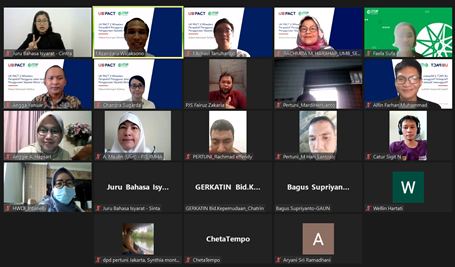The large-scale uptake of e-motorcycles will pose new challenges to road users since several segments of e-motorcycles may fall into a grey area between bicycles and motorcycles. A guide on street design is important to provide a clear classification of the e-motorcycles in the road user ecosystem and to ensure accessibility for all road users. Before developing the complete street design guideline, identification of road safety issues and concerns related to future mass e-motorcycles usage should be taken into account. Therefore, ITDP Indonesia conducted a field survey and FGD with the aim to understand perspectives and concerns of road users on current conventional motorcycle usage and future mass electric two-wheelers usage on the road. These activities also aim to gather anecdotal experiences about motorcycle-related accidents and near-misses in Greater Jakarta and their efforts to avoid those.
On November 14-16, 2021 ITDP Indonesia conducted a field survey to capture road users’ concerns on current two-wheelers usage and future electric two-wheelers uptake, differentiated based on their mode (pedestrians, cyclists, motorcyclists, car users, and public transport users). Concerns involving safety, security, and comfortability aspects of using road space in Greater Jakarta were captured from more than the targeted 500 samples, a minimum of 100 from each mode.

As there were only a limited number of persons with disabilities (PWD) found during the field survey, on November 18, 2021 ITDP Indonesia conducted a Focus Group Discussion with representatives from several organizations advocating PWD needs in Greater Jakarta, namely Jakarta Barrier Free Tourism (JBFT), Indonesian Association of Women with Disabilities (HWDI), Indonesian Blind Union (Pertuni), Indonesian Association for the Welfare of the Deaf (Gerkatin), Indonesian Mental Health Association (PJS), and National Public Accessibility Movement (GAUN). Having the same objectives as the abovementioned Road Users Interview, some of the findings found through this discussion are:
1. Electric two-wheelers present additional risks for people with vision disabilities as they do not produce any noise.
2. As current electric two-wheelers, in general, have lower performance compared to conventional two-wheelers, it should be ensured that the brightness of their headlight to be as bright as conventional two-wheelers so that they would not present additional risks to other road users.
3. Two-wheelers and other vehicles equipped with horns should also be equipped with additional visual cues (for example blinking lights) every time they are honking the horn, so that road users with hearing disabilities would also get the message.
4. Electric two-wheelers should be regulated to use a separate road space with pedestrians as they are quite comparable with conventional motorcycles in terms of dimension and speed.

Apart from the previously mentioned complete street design guideline that accommodates higher electric two-wheelers uptake in the future, findings from the survey and FGD would be used to compose suitable policy recommendations for the government to address current concerns regarding conventional and electric two-wheelers usage, and also to mitigate potential issues that might arise from higher electric two-wheelers uptake in the future.
